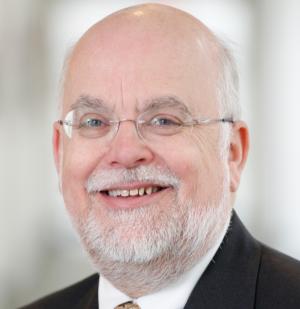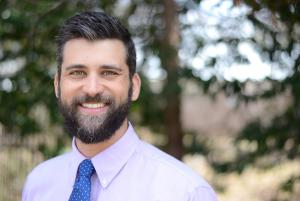Resources

In March 2020, when colleges and universities across the United States and the world started rapidly moving all of their courses online, a few colleagues reached out to me to ask about best practices for online teaching. I have been studying online teaching and learning for over a decade and can provide links for inclusive online course design, peer-reviewed academic articles, and handy best practice takeaways. But the truth is, what we are dealing with right now is not a “best practice” scenario. Now is not the time to try to do everything you might if you had the time and mental space to plan for an online class. Nor can we act as if there wasn’t a pandemic going on. What we are doing right now is emergency remote teaching. Does anything we knew about online teaching in the before time transfer over to this crisis scenario? In a word: yes. The most important and consistent finding in all of my research has been that making real human connections with students in online classes leads to better outcomes. This is a lesson that not only still applies, but is more important than ever. Building Rapport with Students When faculty make an effort to reach out and connect with students, or build rapport with them, their efforts have a powerful impact. When a student has a positive relationship with their instructor, they are more likely to stay enrolled in the class, to earn a better grade, and, ultimately, to graduate. When it comes to online teaching, however, many institutions and faculty members spend most of their time concerned with technology and far too little on human connection. The vast majority of institutional training programs focus on mastering the Learning Management System. Even in the midst of a pandemic crisis, many faculty members are concerned about uploading professionally-edited videos or learning how to use Zoom. Being able to use technology is important, but once basic functionality is achieved, the focus should be on connecting with students. In a recent survey of thousands of students at the University of Arkansas at Little Rock, only 15% of students said that they wanted their professors to be producing interesting and engaging content right now. More than twice as many students (31%), wanted professors who were available and answered their emails. The most popular response (42%), was professors who were flexible with assignments and deadlines. Thus, I would argue that the most important thing professors can do right now to ensure their students’ success is to connect with them on a human level. Techniques for Building Rapport How can we build rapport with our students? Both long-term and short-term teaching experiments offer a few key strategies. Ask for feedback. Students want to know that you care what they think. Connect with students through a short survey or even just adding an extra question onto the next quiz. Something as simple as “What do you want to ask me?” or “What can I do to best help you right now?” sends students a signal that you care about their input. Send personal emails. Taking the time to personally reach out and check in on a student can make a world of difference. This can be time consuming, so start with the students who haven’t show up for class in a while and may be struggling. There are mail merge tools available online that can enable you to reach many students without a lot of work. Humanize yourself. If your class just moved from face-to-face to online, you already have an advantage. Your students know you are a real human being and not just a grade-generating robot. You can further humanize yourself by leaving markers of everyday life in your videos—don’t edit it out when your cat jumps on your lap or your toddler asks for a cookie. Your students may have cats and toddlers too! These moments help them see you as a real person they can connect with. Be flexible. The situation we are dealing with is not business as usual. Communicate to your students your flexibility on deadlines, adjustments you are making to the syllabus or assignments, and your understanding of what they are going through. Make sure they know that you are willing to work with them. Looking Ahead Building rapport with students is more important than ever during this crisis. But the empathy and understanding we are fostering now are attitudes we need to take with us into future classes as well. Right now, everyone is in crisis, so it is easy to be compassionate. But every semester, some of our students will experience personal crises that are at least as disruptive at Covid-19. If we make real human connections with our students, we will be ready to help them be successful in our classes no matter what challenges they face. [caption id="" align="alignleft" width="695"] Students at University of Arkansas Little Rock, photo credit: Larry Rhodes.[/caption]

When Covid-19 became a pandemic, I was not ready to make a transition to online teaching out of the blue, in the middle of the course period, but I felt a great responsibility for my students since they were going through upheavals. So, I made a 3-minute video for them and shared it through email; I encouraged them to stay safe and strong. This initial video brought a message of hope and care to them. In these tumultuous times, I see myself as pastor, theologian, and scholar. I also sent a kind, informative email to them to make sure we were all on the same page in terms of the remaining course schedule. I reached most of my students through email, but three of them did not respond for two weeks. I was anxious about them and looked for them like a shepherd who has lost a sheep. I tried to contact them every way I could: by phone, through school staff, through social media. My attempt failed. Two weeks later, they responded to me with descriptions of personal and family crisis. I was so happy that all of my students were safe. My philosophy during this time is to streamline teaching or learning, to minimize the use of technology other than that with which they are already familiar (e.g., email and the Learning Management System [LMS]). I did not ask them to learn new online skills or to set up a Zoom account. In fact, “Online Meetings” was available through our school’s LMS. All I emphasized was the importance of fast communication through email. In this traditional tech way, I maintained close contact with them and understood their individual situations. With this teaching philosophy in mind, I prepared a weekly PPT with audio narrations (like lecturing in person, unlike just reading the text) and uploaded it to our LMS, along with the new course schedule and detailed instructions. Then, the students were asked to review my PPT several times and submit a response paper to the weekly question via email. They followed my instructions very well, but some of them were struggling, so I proposed weekly online tutoring times during which I could speak with some of them online “face-to-face.” One time I had 10 students in our virtual room and talked with them about various topics they brought up. It was a good, humbling, and eye-opening experience. We felt our close community in this together. I learned how to make a podcast with a smartphone application and created podcasts for my students. I ended up making a total of 13 podcasts, each an average of 6-7 minutes. They were like songs with critical information for the week. Each podcast had its style or color with background music. My students loved them. It's an irony that this unusual environment allowed me to obtain the necessary online teaching skills which I have wanted for a long time. While virtual teaching won’t replace face-to-face meetings, in the future we may serve some “special” students who cannot make class every time. I think we may need to use hybrid courses often to maximize the student learning experience. Now I am sitting at the chair at my home and thinking about my students who are going through this pandemic. I had the joy of reading their journals of “Reading and Learning,” which is part of the required assignments. They took journaling seriously and wrote it in creative ways. Below are some excerpts: I really have to say Dr. Kim; I like the way you have really made this transition WORK! You have kept us intact with emails, weekly videos, and now the podcasts. This has been a very smooth transition; you have answered a lot of our questions and concerns on your podcasts and you have been willing to pour out to us all that you have learned over your career. I love the part where you say 'Hello, this is Dr. Kim speaking to the World!' I am so thankful for the power points because you say more than you write on the slides. I can re-listen and that’s one of the luxuries we do not get in person. In coming to class, we hear it once, and then it's off to the next thing. However, with the podcasts and blogs, it's more personal and within reach. The past two weeks your voice has become a household voice, and I do not use any headphones so when I am listening to audio. Bless you, Dr. Kim, I just wanted to give you a quick “shout out”, since we have been schooling online. I call it a pleasure to get up in the mornings and get my cup of coffee and listen to your podcasts or re-listen to your PowerPoint with audio!

As everyone moved to online teaching and learning in mid-March, our faculty and students made the leap of faith onto various platforms. Faculty had to get ready over a weekend for synchronous teaching via Zoom (including Shabbat on which technology is not commonly used) so that the following week, fulltime ordination students would have their regular classes available (including our daily Beit midrash [collaborative exegesis seminar] and daily prayer). There was technology to set up, faculty to train on the technology, as well as the individual concerns and varieties of teaching. Students needed to be directed and advised, not to mention the current asynchronous online students on a different platform. These students were used to online learning, but now had children and work responsibilities at home and were separated from their usual equipment, resources, and books. In addition, a wonderful rabbinic colleague had just passed away from Covid-19 leaving a bereft family and congregation. It was a massive effort that week, so you can imagine how I felt at the end of that week when a faculty member suggested we offer a community-sustaining opportunity for our educators and students. She envisioned bringing people together, lowering the frenetic atmosphere, and offering pedagogic and spiritual resources to those who were leading their own institutions. It took some persuading, but gathering my last ounce of energy, I saw the wisdom of her proposal and agreed to teach the first session on the Monday before Passover. Knowing that Passover was about to commence for our community gave us that extra impetus to offer a message of comfort, hope, and promise of liberation to those who would be working through the holiday season. Come Monday morning, we commenced with a simple Hinneni–‘Here I am’ like Moses at the burning bush in the wilderness. It was a wonderful opportunity to connect and breathe together as colleagues, fellow Jewish educators, and students. Then I taught the midrash of the four children of the Passover Haggadah reminding everyone that the midrash is based on four hypothetical biblical children’s questions, three of which (the wayward, willing, and wondering) come before the event of the Exodus in chapter 13. Their questions of uncertainty and anxiety are the same questions we have about our current situation and they need response from our spiritual resources of hope and healing. The fourth biblical child (wise) comes to ask his/her question once the whole experience is over. A reflection on experience, the question (derived from a verse in Deuteronomy 6), requires we respond in a different theological way, as does the Deuteronomist. That learning was followed by a colleague inviting participants to reflect together about our questions of uncertainty. This colleague used the framework of the Gibbs cycle of reflective action--encouraging the expression of feelings around decision-making and personal and professional circumstances. It was a cathartic experience for the participants and it lifted the burdens upon us. Now we were a community of educators looking to each other and to our tradition of text and ritual for sustenance and healing. All my hesitations about this additional time online fell away as I realized that this was probably the most important spiritual solace we had had all week. We were also modelling a pedagogic practice for the participants to emulate with their own communities. After 75 minutes, we had a final moment of nehemta–a concluding spiritual expression of hope. One of our cantorial students introduced a piece of modern liturgical music by saying, “This is for you, our teachers who are on the front line of providing essential spiritual service.” The words of Debbie Friedman, beloved Jewish singer songwriter, melodiously flowed from his guitar: For our teachers and their students And for the students of their students We ask for peace and lovingkindness, and let us say: Amen. And for those who study Torah here and everywhere May they be blessed with all they need, and let us say: Amen. It was tranquil, contemplative, and uplifting. It was a selection (Kaddish de’Rabbanan) that traditionally marks a culmination of Torah study or the death of a Torah scholar. This time it did both. We then bid each other goodbye as we unmuted and wished each other a ‘fulfilling Pesach of enacted freedom.’ I very quickly wrote to my colleague, “Brilliant! When are we doing the next one!” “For our teachers” is now a biweekly webinar, an act of hope in a time of uncertainty.

It was just a few years ago when one of my graduate students lost her mother to a sudden unexpected illness. Despite the abrupt passing, three days later that student returned to class. Like any other day, she opened her laptop and took notes while listening to my lecture. Confounded by her composure, I talked to this student later and let her know that she could take extra time with any course-related work, and that I was giving her authorization to be absent and spend time with family. Yet she did not want to. She told me that being in class made her feel like everything was normal, as if her life was intact and unchanged. As a teacher, and of course, a former student, I empathized with her predicament. For many, school offers more than an education, but a place of community, sanctuary, sustenance, and security. In a matter of weeks, Covid-19 has radically altered how students are educated around the world. These transformations give us a glimpse of how our education system can and will change—for better and for worse. The pandemic has put students and educators in difficult circumstances, ranging from mere inconvenience to a total loss of one’s livelihood. It has also prompted new models of educational innovation that may have a lasting influence on the direction of learning and applications on the Internet. For myself, and nearly all the other faculty I know, we have been consistently relying on Zoom, a video platform, for online teaching, meetings, and teleconferencing. As the majority of educational faculty have shifted to online teaching, many of us have encountered the issues that come with it. First, we experience the unreliability of video conferencing as Zoom was not prepared for this heavy global usage. It has had to adapt quickly to the exponential surge in traffic. Second, we cannot ignore the difficulty of teaching online verses being in a physical classroom. Third, is the question of adequate means of evaluations for students and for students evaluating the professors. As a professor teaching online, I have had my share of difficulties and frustrations. The connection on my laptop has been faulty as I teach via Zoom, so I have resorted to using my phone data to teach rather than Wi-Fi. With the limited screen, I can only view two or three student’s faces at a time which isn’t the best way to stay engaged while teaching. During class, most students are on mute to cancel out distracting background noise, therefore, I sometimes feel like I am talking to a blank void because of the silence. I cannot imagine how difficult it must be for students to concentrate with the plethora of distractions both online and environmentally. In addition, it takes time for them to ask questions or participate in class discussions as they pause to unmute themselves. Furthermore, when the Wi-Fi is slow, some don’t have their videos on; it is even harder to teach looking at “blank” faces. Spontaneity is an important part of learning. Something a professor or a student shares may lead to further and deeper discussions which may not have been planned. This is often difficult to create in front of a laptop where the students are muted and sometimes their videos aren’t running. Teaching is about being present, engaging, dialogue, eye contact, body language, listening, and communion, and these cannot be simulated in front of laptop or cell phone. Videoconferencing ends up fostering instructor-centric learning, rather than multiway interaction which is ultimately collapsed into a one-way communication after a certain number of people join the conference. Looking through the materials gathered by instructional tech groups and learning centers, I see that the resources focus almost entirely on the operational “hows” of technology: recording lectures, making discussions, and examinations. However, it is not adequate to continue the learning-teaching venture. Past the digital connection, is the emotional one, particularly in times of uncertainty and rising anxiety. Of course, I do not question the shift to online or closed campuses, rather I think about how during periods of fear and anxiety, we must ensure students are not only learning effectively, but also are taking care of their mental health. We professors can provide solace, enrichment, and balance during a mentally and emotionally draining epidemic. Not only do I do my best to ensure that my classes are as positive and entertaining as they can be, but I also bring to attention that I am always available for support. I try to humanize myself and remind myself that so many students have left behind more than academics and classrooms. Above all, it is important for professors to ask our students what we can do to help them. In times of uncertainty, we can do our best to create space where students’ ideas and individual voices bring light to one another, as they do for us. While there is a surplus of uncertainties during this time, what we can be sure of is that Covid-19 has become the catalyst for educational institutions to explore new solutions in a short period of time. The question of student evaluations, therefore, needs to be seriously reexamined. With students under higher stress levels, educational institutions need to rethink how students are graded. With campus shut-downs, many libraries are closed and digital books and journals are limited. In the context of major world panic, economic alarm and growing illness, our students should be given leeway not just academically, but financially. Presently, we are seeing students and solution providers welcome the “learn anytime, anywhere” concept of online education. we have been reminded that the way of the future is through a range of mediums. Conventional in-person learning will be accompanied by novel education modalities, from live broadcasting, to virtual reality, to educational influencers akin to social influencers. We are finding that learning can be a practice integrated into daily routines, becoming a true ‘lifestyle.’ The rapid spread of Covid-19 has forced us to challenge ourselves and build resilience from incalculable threats, challenges, and insecurities. We must use this pandemic as an opportunity to remind ourselves that the skills we must impart to students in an unpredictable world include sophisticated decision making, creative problem-solving, and most importantly, adaptability. We do this to build resilience in them, and the future we help them create.

There’s no one way to go about developing a course. More often than not, it’s an individualized process driven by standards, one’s academic field, the course intent, and personal preferences, and habits. Below is one way to approach the development of your online or hybrid course. FIRST Prepare your syllabus and outline your course. Choose the course structure that best fits your student learning outcomes and the pedagogy appropriate to that end: fully online, hybrid, tutorial, synchronous or asynchronous, concepts-mastery, competency, skill-attainment, scaffolding, etc. Using a mindmap or a scope and sequence worksheet to plot your course can be very helpful. Determine the assessment of learning practices or instruments you will apply. Discern how much you really need in your syllabus and what best resides on your online course site. Hint: you really only need a two-page (printable) syllabus! SECOND Prepare the course learning support content: course reading checklist, handouts, bibliography, assessment rubrics, course project descriptions, work samples or models, etc. Post all documents in PDF format unless they are editable worksheets. Determine the student learning activities that support your course objectives, including assignments, quizzes, exams, course projects, discussion forums, exercises, etc. Be sure the student learning activities align with course learning outcomes. If your LMS uses competencies frameworks, be sure to align and link your student learning activities to the appropriate competencies framework. Rule of thumb: do not teach what you will not assess. THIRD Write the copy for your online course, including Induction components: introductions, orientation, transitions, closure, directions, instructions, prompts for forum discussion or exercises, session and course closure session, etc. Determine the pedagogical function of the discussion forums (discussion and dialogue, analysis, providing evidence of comprehension, critical reflection, theological interpretation, reflection on experience, etc.). Not all online courses or course sessions require student “discussion.” Avoid superfluous material: align learning objectives with content, student learning activities., and assessments. Repeat: do not teach what you will not assess. FOURTH Determine interactive and media components for your online course. The online environment is a visual and experiential platform, exploit that advantage to enhance the learning experience. Make wise choices and applications of media: recorded Powerpoint slides (Do not post Powerpoint format files), videos (a 20-minute video is too long), internet sites, recordings, etc. The criterion is that every component needs to have a pedagogical function related to your learning outcomes. Avoid superfluous material: align learning objectives with content, student learning activities, and assessments. Again: do not teach what you will not assess. THE LAST THING YOU WANT TO DO The last thing you want to do is set up your online course site. Determine the course format (weekly, thematically, etc.) Create a course banner to give your course site personality. Create your course modules using your copy from step 3 (copy and paste). Create your online Gradebook. Assignments you create should automatically populate your Gradebook. Determine how you will use the Gradebook (e.g., will you make it visible to your students?). Link writing assignments to the Turnitin function on your LMS if your institution uses it. Ask a colleague or your instructional design staff to review your course site.

With the spike of mental health issues, and the fear, loss, and uncertainty students are facing in the middle of this coronavirus pandemic, connecting with students is critical. In some cases, life-saving. Yet, amid our transition to online teaching, the complete disruption of “normal,” and personal issues to deal with, creating a connection with students can seem prohibitively difficult just when we need it most. Can this time of crisis present an opportunity for us to be conduits of hope, assurance, and inspiration to students? In a time when students are fearful as they face unchartered territory, we can help calm their fears and encourage them, by sharing our own struggles and how we overcame them. Our personal stories of overcoming challenges communicate to students that everything will be ok—that they will make it through this dark time. When my institute, Palm Beach Atlantic University, responded to our county order to close the campus, many students were distressed and scrambling to find a new residence. Seniors felt great loss as the reality sank in that they may not see their roommates, classmates, or professors again, and that there would likely be no graduation ceremony. How could I reassure and comfort the class? In our live conference, I talked about my own struggles. I began by admitting that I had uncertainty—I couldn’t yet answer most of their questions about residence, graduation, or internships. I disclosed that for me this pandemic had triggered memories of a trauma I experienced several years ago and had heightened my anxiety, and that with the world “falling apart,” I, too, was finding it hard to stay focused and motivated. I added, with a bit of humor, that the most stressful item keeping me awake at night was fear of running out of toilet paper and diapers for my baby! (Focusing on the minute is a typical response to trauma.) Then, I shared the story of when I survived a near-death experience and a difficult recovery. I made it through, and in the end, I was much stronger for it. Sharing our struggles builds immediate rapport with students. They realize that we’ve lived through hardships like theirs. We survived, and so will they. Our times of crisis—whether relational, health, financial, or otherwise—built our character, made us wiser, helped define who we are today, and revealed that we were stronger than we thought. This is a message that our students need to hear! It’s risky and humbling to share the story of one’s trauma or hardships, but our vulnerability creates a safe space that invites students to respond with openness and honesty. Letting students get to know us provides the personal connection that increases student learning. This atmosphere of student learning and engagement is vital for our current online settings. How can you connect to students in your online classes? Here are some practical suggestions: Create time and space in your class for connecting. Set aside the first few minutes of class time (or a conference) to give the students an opportunity to discuss how they are doing. It doesn’t need to be emotional or drawn out—you can say, “We only have a few minutes, so just take just a few seconds each and let us know how you are doing.” Assure them that it’s fine to be “great” as well. Jot down any major issues. Follow up with those students when the class is next together—perhaps invite them to give an update. (Remembering their comments and following up is a powerful demonstration of a truly caring professor!) These few moments provide insight into how the class is doing overall and can help you know their learning needs. Tell the students you support them, you care about them, you are thinking about them. These simple words can be life-giving—assuring the students that they are not alone. Remember, many of our students lack positive role models and a support network. You might be the only voice of reassurance and comfort to your students in this time of crisis. Communicate to the students that you understand and can relate to the struggles they are facing. This has never been easier because we actually are facing the same issues! Share some of your own difficulties in working off campus, changing your routines and schedule, and needing to stay isolated. Create a venue for students to share with one another and support each other, such as a discussion group. Have you connected with your students in other ways online? Please share below.

Students are in crisis. How can they keep up with their academic life when the pandemic has all but assured that their personal and emotional lives are experiencing some measure of turmoil or trauma? The novel coronavirus has upended every area of society. There is no sector of public or private life that it has not affected. Faculty at institutions of higher education have been reeling from figuring out how to transform their in-person classes into a virtual format in the blink of an eye. On the other side of these virtual classrooms, students are themselves reeling from all of the changes. Professors are telling stories of students flooding their inboxes with messages expressing anxiety, an inability to focus, and an inability to keep up with their assigned work. As a result, many realized that students are carrying so much emotional and psychological distress that they need professors to be sensitive and mindful of their circumstances outside of the classroom. Without a doubt, they are right; students are drowning and they need faculty to throw them a lifeline. Professors are seeing that they need to “shift gears” to exclusively online formats and shift their expectations and requirements for students. Higher education in the age of the Covid-19 has professors making changes that are sensitive to what is happening in the students’ lives outside of the virtual classroom. Many have taken their cue from those like UNC-Chapel Hill Professor Bandon L. Bayne who made headlines after he amended his own syllabus and expectations for his students when classes were forced to go entirely online. Bayne explained that he discovered that his students not only had “a whole range of differential access to material,” but also that students were all treading water trying to navigate their own anxieties about the pandemic and their varying family and life contexts. Thanks to the pandemic, many in higher education are realizing what has always been true--that they must keep in mind the whole student when teaching. They are learning that teaching during a pandemic means that being an educator entails more than pedagogy, it includes structuring classes around the premise that student circumstances outside of the classroom have a direct impact on their ability to navigate the classroom and to meet classroom expectations and requirements. Faculty are learning that this was always the case, even in the pre-pandemic world of higher education. In our current Covid-19 world, many rely on the Centers for Disease Control (CDC) for guidance and updates about this relatively unknown virus. Yet, the reality is that the CDC had already warned of a public health issue that has a direct impact on the functioning of students in higher education before they ever heard the words “Covid-19” or “coronavirus.” In November 2019, a few months before Covid-19 began spreading across the globe, the CDC declared trauma a public health issue. Additionally, before the CDC made this declaration, faculty across disciplines were seeing college students navigate what seemed like ever-increasing mental health crises. Increasingly, students have been dealing with mental health barriers coupled with rising rates of mass gun violence and campus sexual assaults. Experts have long suspected that many college students carry the effects of childhood trauma well into adulthood, in addition to having to navigate the challenges and realities of modern college life. Many of us who teach in higher education can testify to this pre-pandemic reality. We have known students whose educational experiences have been marred by mental health crises. Many bright and promising students are forced to forgo their educational pursuits in order to tend to untreated and unresolved trauma which commonly manifest themselves during the college years. Other students may not forgo their educational pursuits, but lean on maladaptive coping mechanisms or sacrifice the quality of that educational experience with an academic performance that is not indicative of their ability. These are all pre-pandemic realities. As a result, the needs of students during this pandemic is teaching educators to always be mindful of students’ circumstances outside the classroom in order to educate the whole student in the classroom. The students of this pandemic are tasked with more than meeting the expectations and requirements of the classroom (virtual, or otherwise). In this respect, while everything has changed, nothing has changed.

By this time in a semester, the ebbs and flows of a well-designed and well-facilitated class would, in normal circumstances, have allowed a community of scholars to flourish. These learning communities help promote critical dialogue with academic peers and help to foster a pluralism of varied perspectives that ultimately serves to elevate the collective outcomes. But what if this process is arrested before this can be achieved? The on-going pandemic has created a reality unlike anything we’ve seen, but, as educators, it is incumbent upon us to ensure that these features can continue to persist. Synchronous virtual instruction (Zoom, Google Meet, Webex, etc.) aims to take the place of the in-person component of our traditional means of teaching. While there is a distinct pleasure in being able to ‘meet’ as a class, the interpersonal conversations are limited and real connections are more challenging to create. In my experience, one reason for this is that virtual sessions are planned to be delivered in an online reality and not as a virtual representation of a normal reality. The best virtual session I ever planned with my students happened by accident because I did not plan it to be virtual. A sick baby necessitated an in-person session becoming virtual, so I adjusted my completed (in-person) plans to fit a virtual lesson setting instead. Findings from this fortuitous accident--shared below--have helped frame how my fellow faculty and I view online instructional delivery. In the scope of my normal lesson planning structure, I generally aim to promote engagement and discussion via a variety of activities that tend to be relatively short in length (~20-30 minutes). To accomplish this within a Zoom, I plan for small bits of synchronous time balanced against asynchronous tasks and breakout rooms to encourage engagement and to ensure that sessions are not rote or boring. By sharing the time amongst different components, lessons become more natural, and the time goes by quickly. Another hallmark of my instructional planning approach is that I strive to offer students opportunities to engage with one another around critical issues and to leverage their budding expertise to share their thinking with their peers. To translate this to a virtual environment, I rely heavily on Google Slides to build a mechanism whereby students can collaborate and engage with one another. For instance, to replicate a gallery walk or anchor chart presentation, I design a template slide for each group that gives students instructions and frames their work. From there, I share this document with each student and change the sharing privileges to “anyone with the link can edit.” This document then functions as a collaborative space for groups of students to work together on a task that they can then share with their peers. To broaden the social/connection aspects of this activity, I utilize the Breakout room feature in Zoom to assign students to random groups. A final area of focus when thinking about delivering instruction in a virtual way is to fashion opportunities for students to engage with one another on a more personal level. To help with this, I open and close with do now exercises and exit tickets that have less to do with the explicit content of the session, and more to do with promoting the well-being and engagement of students instead. While we always want to maximize the amount of time that students are exposed to instruction, in the unique environment of a Zoom, taking some time for these kinds of activities pay off. When all is said and done, our duty as educators requires us to do what we can to help lead our learners towards achieving their potential. As we continue to learn more about how best to work with our students in these uncertain times, a great first step is to think through planning and delivery using this lens: Plan as though you are delivering your lesson to a full class of students, Incorporate virtual techniques to approximate in-person experiences, and Allow yourself (and your students!) grace to spend time with each other and to value the benefit of social interaction. While learning will continue for many, for some, this transition to a virtual classroom will be crippling. Recreating a learning community in a virtual setting will help those students reestablish connection with their peers and their professors, and hopefully offer an avenue for all to reach higher levels of achievement.

My teaching style has always been a bit on the lighthearted side; I crack jokes, use ridiculous metaphors, draw inelegant pictures on the whiteboard and make my students guess what I’m trying to convey in an odd version of academic Pictionary. Being funny is a great way to keep students engaged! But now that my school, along with everyone else’s, has gone fully online for the duration of the semester, I’ve had to reframe my humor–what I usually think of as a useful teaching tactic, I now see as an indispensable tool for teaching effectively in a global pandemic. It’s already cliché to say that everybody’s stressed out by this health crisis, but the sheer variety of ways to be stressed is staggering, and my students seem to embody every one of them. I teach at a women’s college where traditional undergraduates learn alongside non-traditional working students; about a quarter of whom are parents. We’re heavy on the health sciences, so while lots of our undergrads are suddenly unemployed from their server and retail jobs, those who work in pharmacies, elder care, and hospitals are being begged to pick up extra shifts. My classes are an eclectic combination of the desperately bored and the profoundly overworked. The only thing they all seem to have in common is how badly they need a laugh right now. I can’t cure their anxiety, but I can offer them a momentary opportunity to forget about it while they’re smirking at one of my quips. These little breaks are a big part of how we can cope with our new normal. I usually rely on reading a room for my jokes, so I’ve had to get more creative. I’m terrible at creating dynamic PowerPoints, for example, and I’m now using them for nearly every lecture. To keep things interesting, I insert snarky comments into my slides making fun of my own dismal formatting and don’t call attention to them while I present, leaving them like Easter eggs for the attentive watcher. When I require Zoom meetings, I ask every attendee if they have a nearby pet or small child they can put on screen for the rest of us to coo over before beginning our discussion. I’m still teaching loads of content in the midst of all these less-serious moments, but it’s obvious that the content flows better when I make space to be a little silly. When my students pop up on webcam to talk about their upcoming papers, they’re visibly tense–this disappears almost immediately when I say that I do want to talk about their paper, but I also insisted on this meeting because I’m lonely and want to be reminded that other humans exist. They smile, I smile back, and for a second or two, they feel better–and then are better able to listen and learn. Beyond benefiting my students, prioritizing humor also helps me look forward to teaching and gives me a hint of that refreshing energy I used to get from being in the classroom with so many personalities. Staring at my laptop for hours on end is a little more bearable when I’m also thinking about whether there’s a way I can insert a picture of a chicken into my presentation so it’ll flash on screen at random intervals while I’m talking. Teaching is a haven for me amid my own apprehension, and it feels even more purposeful when I can try to make it haven for my students too. There is no one teaching style that will spell perfect success in this tumultuous time, but for even the most serious professor, I urge you–try for some silliness! Change your Zoom background so you look like you’re lecturing from the middle of the zombie apocalypse, offer pictures of your pet as a reward for students completing required tasks, come up with a rude nickname for your online learning platform (I like to refer to Canvas[1] as “that jerkwad”) and use it whenever part of your haphazardly constructed course site doesn’t work the way you thought it would. Give yourself the gift of being a little ridiculous, and you’ll find that your students’ attitudes–and their work–will benefit from the break. [1] No offense to Canvas. It is a beautiful, elegant system, even when I can’t for the life of me figure out why it keeps taking assignments off of the student to-do list.

The previous blog in this series focused on “long shot” (“big picture”) editing, specifically, revision tasks related to changing scenes and cutting. This final blog in the series zooms in to “medium-shot” and “close-up” editing. I realize that not all preachers have time to focus on revisions every week. While I cannot offer extra time, I can offer recommendations from filmmakers to preachers who have only 30 or 45 minutes to revise their sermon prior to Sunday morning. Medium-Shot Revisions Choose one major move/section of the sermon and focus on setting the scene with vivid language that sparks a variety of senses. The preacher does this by first visualizing the scene and providing a “thick description.” Filmmakers can be helpful guides since they make hundreds of choices in order to provide scenes that create the desired impact on the viewers. Looking carefully at their craft can hone the preacher’s skills for description. Try this exercise: Choose a scene from a favorite film. Press pause and write your responses to the following questions. Where is the scene? How do you know? What objects appear in the scene? What details give you clues about the characters in the scene? What is the major color scheme in the scene? What mood does it create? What do you think happened just prior to this scene and what is likely to happen after? What in the scene involves your hearing? your sense of smell? Now go back to the major move in the sermon and describe your scene using the same prompts. This process helps you visualize the scene so that you can describe it in a way that helps your hearers visualize it . . . without a screen. Writer Janet Burroway summarizes this well: “The first requisite of effective setting is to know it fully, to experience it mentally; and the second is to create it through significant detail.”[1] One caveat: refrain from getting carried away with details that don’t actually advance the main trajectory of the sermon. In other words, not everything from the exercise will appear in the sermon. Keep only those descriptors that move you to the next section. Close-Up Revisions We now zoom in on individual phrases and words. The art of choosing just the right word is not lost on the preacher. In fact, sometimes we agonize over just the right word. I would like to recommend that preachers spend time on the particular phrases that serve as transitions from one major move (section) to the other. Once again, films can assist. Take a segment of the film you engaged above and watch the film until you’ve identified two to three scene changes. Once you’ve done that, take a closer look at the transitions themselves. How does the filmmaker guide us from one scene to the next? Are there hints in the previous scene that we will be moving to a new scene? Or, is the scene change abrupt? If so, why? What effect does an abrupt scene change have on a viewer? Once you’ve engaged the transitions in the film, return to your sermon draft to analyze its transitions using similar questions. The first step is to make sure that there are transitions. Second, identify the roles the transitions play. In his book, The Witness of Preaching, homiletician Tom Long suggests that connectors (his word for transitions) accomplish four communication tasks: provide closure for previous segment indicate how upcoming section is related to previous anticipate the content of the next section helps listeners adopt a stance Finally, be creative and not clichéd. There are common transitions that belong specifically to the genre of sermons, for example, “In today’s gospel reading . . .” You’ve heard it. You’ve said it. But why not be more creative, especially since when you begin to talk about Peter, we know you are referring to the section of scripture that was just read. Instead, if you are transitioning from a contemporary story to something that happened with Jesus and disciples, try this: “We weren’t the first to be in awe of Jesus’ capacity to calm the treacherous seas of life. The disciples saw it first-hand . . .” Again, while I cannot gift preachers extra time, I hope these recommendations, gleaned from the wisdom of filmmakers and their work on the screen, might at least offer some editing possibilities if and when preachers find they have extra moments once they’ve got their “rough cut” on the page. [1] Janet Burroway, Imaginative Writing: The Elements of Craft (147).